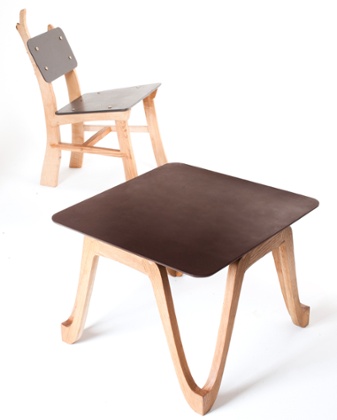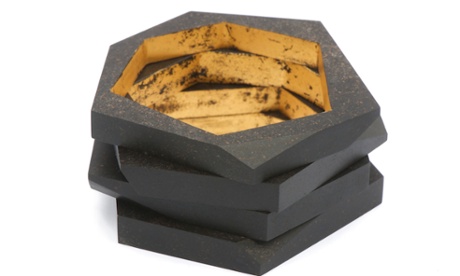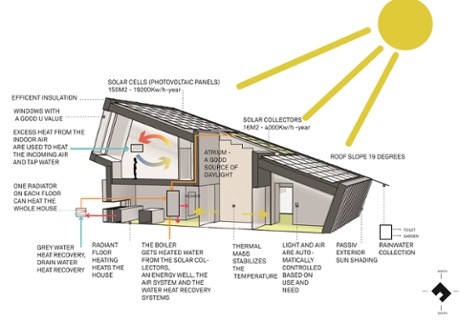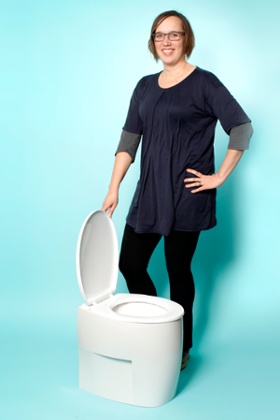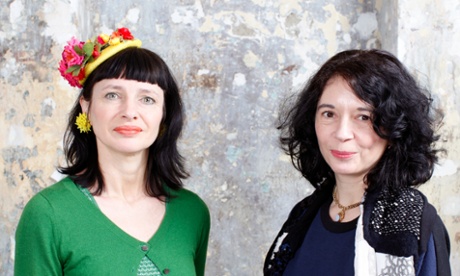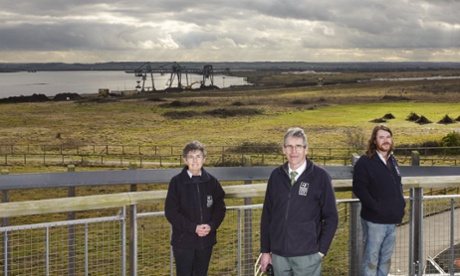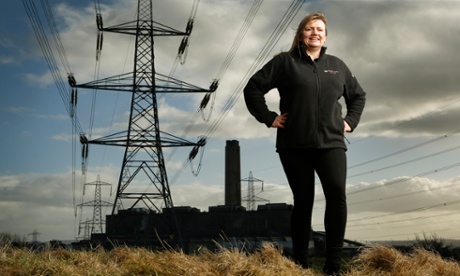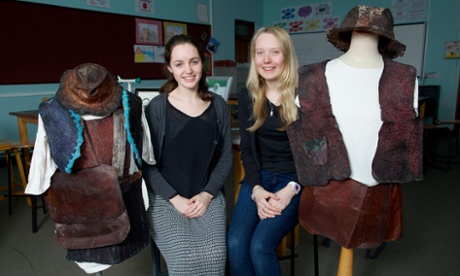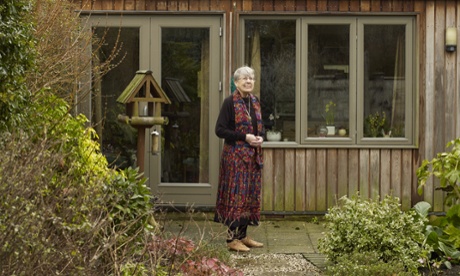The zero-waste revolution: how a new wave of shops could end excess packaging
The smell in Natural Weigh, a zero-waste shop that opened a year ago in Crickhowell in mid-Wales, is lovely. The shop – filled with pasta, grains, seeds and dried fruit served from hoppers to avoid plastic packaging; washing-up liquid and laundry products that customers pump into their battered old squeezy bottles; fair-trade coffee and chocolate, plus an array of environmentally friendly products, such as bamboo toothbrush holders, plastic-free dental floss and vegan leather snack pouches – looks lovely. The little town itself, which prides itself on having the best high street in Britain, is lovely, too. I am captivated.
Natural Weigh is part of a quiet revolution. Over the past two years, well over 100 of these stores have sprung up across the UK. Precise numbers are hard to come by, but some in the business say there are almost 200, many in environmental hotspots such as Brighton, Bath, Bristol and north-east London, but also in plenty of other less obviously fertile areas. Zero-wasters are in touch with each other on Facebook, and have their own bible in Bea Johnson’s book Zero Waste Home.
Chloe and Robin Masefield started Natural Weigh, which they say is Wales’s first zero-waste shop, in March 2018. “We got the idea in August 2017,” says Robin. “We saw a shop down in Totnes” – Earth.Food.Love, which opened in March 2017 and presents itself as Britain’s first zero-waste shop – “and thought we should go for it.” Chloe and Robin worked in the environmental sector – Chloe for the Woodland Trust, Robin in the fishing industry – and saw a plastic-free shop as a natural extension of their environmental concerns.
The shop is part of what used to be a pub. When it closed, it was earmarked for redevelopment as a supermarket, but local people bought it instead – raising a cool £500,000 – and the site houses an antique shop and a cafe as well as Natural Weigh. Crickhowell is fiercely protective of its independence and taste for non-supermarket shopping. The high street also includes two high-quality butchers and two greengrocers – one reason the Masefields don’t sell organic veg alongside their dried goods, as many zero-waste shops do. They don’t want to undermine their neighbours.

It cost the Masefields more than £40,000 to set up the store, and Robin says it is on track financially, although he has carried on working part-time to supplement his income. There is a steady stream of shoppers on the Monday morning I visit. Ann Williams is a regular. “I liked the concept,” she says. “We have far too much waste these days.” She buys all her washing and cleaning materials here, as well as lots of dried goods. She says she has always been careful to recycle, and sees zero-waste shops as a return to the days of grocers decanting products from large containers. “I don’t know why we ever moved away from that,” she adds. “Supermarkets are the problem. I do hardly anything in supermarkets now.”
Pip Mumford says she buys into everything Natural Weigh represents – healthy eating, local shopping, ethical sourcing, zero waste. She is trying out the shop’s eco cleaning products for the first time, filling up a bottle from the pile that the shop keeps for customers to use, and also stocking up on ingredients for her homemade muesli. “It tastes much nicer,” she says.
Hugo Tewson is running round the shop, grabbing nuts and cereals, and using the nut grinder to make peanut butter. “It’s great fun to shop here,” he says. “The washing-up liquid is great. I’ll be back tomorrow with my own bottles to fill up. That’s very satisfying. I need turmeric for my arthritis and it’s great to be able to buy it in proper quantities. The nut butter is wonderful. I hate shopping, but this is a different experience.” The performative aspects of zero-waste shopping, which children and middle-aged men with an aversion to conventional shops particularly enjoy, are not to be underestimated.
This part of Wales has quite a few second homeowners and a degree of affluence that makes it possible to raise half a million quid to see off a supermarket.
Some view zero-waste shops as inherently middle class in their combination of healthy eating and social concern, but Masefield hopes his shop can reach a broader demographic. Liz Maglaras, another regular at the shop, believes it can. “Most people think it costs more to shop here,” she says, “but that’s not true. Sometimes it’s the same and sometimes it can be cheaper. Occasionally, it costs more, but that’s because I’ve got an addiction to those really nice chocolates over there. I’m not on a high income, and I don’t think it’s only for the rich. It doesn’t have to be anyway, and I know all sorts of people who shop here.”
The Clean Kilo opened in Digbeth in central Birmingham last June. The location is significant: Digbeth is the Shoreditch of Birmingham – a rundown area that now has a millennial buzz and a taste for social entrepreneurship. The two social entrepreneurs who set up the shop, using their own savings plus money from crowdfunding, are Tom Pell, a 32-year-old chemist who got the zero-waste bug in Australia (which is at least a decade ahead of the UK in environmentalism), and a 28-year-old fashion designer, Jeanette Wong.

The shop styles itself as a zero-waste supermarket, selling not just the nuts, pulses, pastas and dried fruits you find in all these stores, but fruit and veg, bread, eggs, cheese, butter, ice-cream – in cones only, no plastic tubs – and vegan chocolate. No meat, of course: a no-no in all zero-waste shops because meat is inherently planet-destroying. When I applaud Morrisons’ decision to allow customers to use their own containers to take home raw meat, Sarah Lewis – who runs the Zero Waster website – looks at me askance. The packaging, she points out, is the lesser problem. Only when we move away from meat, which demands that more and more forest land be cleared for grazing, will we start to confront the climate crisis.
I like the Clean Kilo’s one-stop-shop approach. It makes the store less austere and clinical than some zero-waste shops. It reminds me a lot of Bulk Market in Hackney, east London, which has a similar energy and range. Here I pick up an organic eco Easter egg with minimal cardboard packaging and none of those layers of plastic designed to make the egg look bigger. What you see is what you get.
The Clean Kilo is also busy on the day I visit. Andrew Wall and Kerry Hughes have come over from Wolverhampton, which they say they often do on a Saturday. “We treat it as our Clean Kilo day,” says Wall. They say they have always recycled as much as possible, but they are trying to cut the amount they recycle, too. As Masefield points out, recycling alone is not the answer because it uses a lot of energy, and the recycled packaging that emerges is of lesser quality. “Calling it recycling is disingenuous,” he says. “It should really be called downcycling because you can’t retain the same quality of plastic unless you introduce virgin materials to retain that quality.”
Joanna Fursman has cycled across to Digbeth from the suburb of Edgbaston in south-west Birmingham and is busy refilling a bottle with additive-free shampoo. “I’ve been trying to reduce the amount of waste I produce for quite a few years,” she says. “I come from a family who grow their own vegetables, and supermarket shopping has always felt a bit odd.”
Natural Weigh and the Clean Kilo both get their cleaning products from SESI (Sustainable Ethical Supplies Initiative), a fast-growing social enterprise based in Oxford that was set up more than a decade ago by Rina Melendez and Paul Godden. It originally supplied ethical wholefoods to schools and farmers’ markets, but started campaigning on plastic packaging and in 2013 developed a range of biodegradable vegan detergents. “At the time there was a niche interest in having properly refillable zero-waste household detergents,” says Godden. “The main issue for retailers was that it was a bit messy, so we went away and developed our own manual pump-based dispensing system.” They now supply 70 zero-waste shops and have another 40 on their waiting list. “We have really only pushed this hard in the last year, and we’re finding it’s an open door,” he says. “Demand is huge now.”

The commercial opportunities have not passed others by. A franchise called the Source Bulk Foods, which has more than 50 shops across Australia, is setting up in the UK. There are already two stores in London owned by Patrick Cermak and Makayla Drummond, who have the master franchise for the brand in the UK and Ireland, and are looking for partners to develop a chain of shops here. “I walked into one of the Source Bulk Foods stores in Australia and I fell in love with it,” says Drummond, an Australian-born accountant based in the UK. “I knew that they had nailed the concept of it – of bringing an old-school idea and modernising it to make it appealing to this generation. I was really excited and thought: ‘We need this in London. I must bring this to London.’”
Supermarkets, too, are waking up to consumers’ growing awareness of the environmental impact of plastic packaging. Blue Planet II and other programmes demonstrating the dangers of plastics to marine life have had a huge impact – many of the customers I talk to mention the Attenborough effect – and recent stories such as the dead whale washed up in the Philippines with 40kg of plastic in its stomach are keeping the crisis at the forefront of the public’s mind.
Iceland Frozen Foods, which tops Greenpeace’s league table ranking supermarkets’ efforts to take on the scourge of plastic, has vowed to eliminate plastic packaging on its own-brand products by 2023. Richard Walker, Iceland’s managing director, says the fact he is a surfer – and so all too aware of the rubbish floating in the sea – has made the issue a personal crusade. “I’ve seen the problem of plastic get worse,” he says, “but I also knew I was part of the problem. Supermarkets are leading contributors to plastic waste, and I was keen to stand up and do something about it.”
Rival chains are also making the right noises. Morrisons, which is trialling a move from plastic bags to paper, says that by 2025 at the latest all its own-brand plastic packaging “will be reusable, recyclable or compostable”. Marks & Spencer is running a trial at its large food store in Tolworth, south London, to see to what degree it can “remove packaging without affecting food quality and freshness”. And even Sainsbury’s, the butt of a Greenpeace April fool lambasting its poor performance on plastic, points out that it has reduced its own-brand packaging by 35% since 2005, and that nearly 40% of its packaging uses recycled content. Hopeless, says Greenpeace, which puts Sainsbury’s at the bottom of its plastics league table, but a start.
The dilemma for the new breed of zero-waste shops is that they want the supermarkets to see the light, but they don’t want them to get so good at it that they drive the little shops out of business. “It’s a double-edged sword because it will mean more competition,” says Masefield, “but my principles mean I still want supermarkets to do it. In any case I don’t think they will do it to the same level as us, or offer the personal touch or the same shopping experience.”
Jeanette Wong at the Clean Kilo reckons shoppers will spot shopkeepers who are jumping on the zero-waste bandwagon or engaging in “greenwashing” – paying lip service to environmental concerns – a mile off. “If it’s a generic shop and the owners don’t really know about zero waste, you get that feeling,” she says. “Customers will know very quickly.”
At Hetu, a small zero-waste vegan shop in Wandsworth, south-west London, I discover a test for whether shopkeepers really are activists, too. When I hand my business card to Laura Boyes, who started the shop in December 2017, she takes a photograph of it and hands it back to me. “Zero waste!” she says triumphantly. If you truly buy into zero waste, it affects your whole attitude and lifestyle.
Like many zero-wasters, Boyes sees herself as an agent of social change as well as a business person. This is social entrepreneurship in its purest form. Some zero-waste shops use plastic hoppers for their products, but she insists on glass. She also makes her customers aware that paper and cardboard have their own environmental downsides, and will suggest they reuse their paper bags rather than chuck them in the recycling. Every alternative to plastic has disadvantages, and bioplastics are far from being the easy answer they are cracked up to be because many don’t easily compost, so reuse beats recycling every time. “Our motto is: planet and purpose over profit,” she says without a hint of smugness. And if supermarkets get really good at it, she says she will happily give up and do something else because the battle will have been won.
On my mini-odyssey, something significant strikes me. I get the first inkling of it when I talk to Helen Bird, a strategic engagement specialist with the waste reduction charity Wrap, which oversees the UK Plastics Pact that most supermarkets have now signed up to – it commits them to eliminating “unnecessary single-use plastics” by 2025. Bird is fascinating on many points, not least in her assertion that plastic should not be seen as inherently the enemy – without it, food waste would be enormous. It simply needs to be used with discrimination. But the real insight she gives me is that the war on waste should be seen in the round. Fast fashion is also wasteful, and we discuss the irony that some people who deplore the use of plastic are also fond of online shopping for clothes that may be worn just once or twice before being discarded.

The new generation of zero-waste stores are a delight and have the potential to change the way we shop and help revive the high street, but Bird makes me realise that the charity shops that many people see as disfiguring town centres and spelling decline for high streets are themselves performing a zero-waste function, ensuring that clothes and other goods are reused rather than sent to landfill.
This sends me on a fresh line of inquiry – talking to co-ops such as the True Food Co-op in Reading, FareShares Food Co-op in south London and the Shrub Co-op in Edinburgh, none of which is strictly speaking zero waste or plastic-free, but all of which try to minimise waste packaging and, more importantly, have an ethos that puts the use of local products, the empowerment of local communities and social justice at the heart of what they do. They are crucial in understanding the nexus of social action and environmental concern, whether supporting local charities and running environmental workshops for schoolchildren in Reading, repairing bikes next to the community store in Elephant and Castle in London, or running a swap shop and food-sharing hub in Edinburgh.
Discovering Nottingham Fixers, which is run by Sarah Maloy, who also has a zero-waste shop called Shop Zero in the city, was important, too. It’s a simple point, but if you repair something it does not go to landfill. Ugo Vallauri, an Italian who cofounded the Brixton-based social enterprise the Restart Project, which had a hand in getting Nottingham Fixers off the ground, makes a strong case for the “right to repair” being essentially political. Manufacturers don’t want consumers to repair things, he says. They want us to buy them all over again, so they make parts hard to get, don’t supply proper instructions on how products work and encourage us to see them as black boxes that have to be chucked away if they go wrong. Vallauri would like to see products “that are designed to be fully repairable, reusable, longer-lasting and not turning into unnecessary electrical waste after a few months”.
I finish my journey in Brighton, where environmental concern is deeply embedded, every other person is a social entrepreneur, cafes have “no-laptop tables” to encourage proper mindfulness and hairdressers advertise themselves as “eco salons”.
Here, I find Infinity Foods, a co-operative established in 1971 that runs a vegetarian supermarket, a bakery and a cafe. It is not completely plastic-free, although it is doing what it can to minimise packaging, and plans to return to the hoppers for rice and pasta that it originally had in the 1970s. Ironically, those were removed because customers didn’t like spending time queueing while other shoppers filled their containers. Convenience was king, and the supermarket ethos had taken over, even among the cognoscenti of Brighton. Now, tastes have come full circle.
Infinity, which is also one of the country’s leading wholesalers of organic and natural foods, stocks magazines that bring home just how large and well-organised this movement is: Ethical Consumer; Positive News (the cover story of which proclaims “The Joy of Fix: Claiming the Right to Repair”); Permaculture; Stir: the Magazine for the New Economy; and PlantBased (a magazine specialising in vegan recipes). What we eat and how we shop have never been more political, and the growth of the new generation of zero-waste shops should be seen as part of a 50-year struggle to change (and, the consumer revolutionaries would say, save) the world.
Then it’s lunch at Silo, widely acclaimed as Britain’s first zero-waste restaurant, where bins are banned, the food is locally sourced (I especially appreciate the garnish of wild alexanders foraged from the beach) and anything left on the plate goes to a local farmer to turn into fertiliser. But my most telling meeting was an accidental one – with Siobhan Wilson, who runs a store called the Fair Shop.
“The implications of climate change call for consumer change,” declares the sign outside the shop, while a poster inside asks: “Who made my clothes?” Wilson has been running the store for 10 years, and its longevity is a little surprising given that she encourages customers not to buy too much. This is the opposite of fast fashion: slow, ethically sourced fashion; clothes built to last. Leather jackets made from end-of-line leather that typically would have been thrown away; T-shirts made from organic cotton, the growing of which involves no pesticides and uses only 10% of the water used in conventional cotton production; and tights made from recycled polyester. Wilson is wearing an intriguing-looking necklace, and when I ask her about it, she says it was made from bullets collected in farmers’ fields in Ethiopia, produced by a women’s collective, bought from a market in Addis Ababa and marketed here by Cred jewellery. Now that really is zero waste.
guardian.co.uk © Guardian News & Media Limited 2010
Published via the Guardian News Feed plugin for WordPress.




